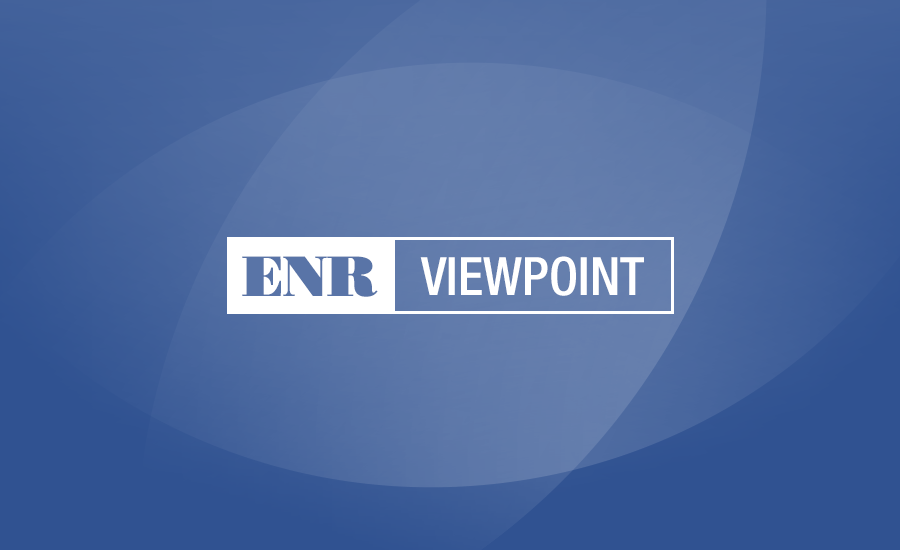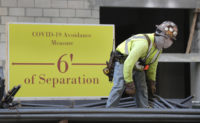Viewpoint: How Shawmut Weathered the COVID Storm

When I took the reins as CEO of Shawmut Design and Construction seven years ago, I anticipated the need to grow our business, deliver unparalleled client satisfaction and create a people-first culture. Adapting to a global pandemic was not at the top of my list. Looking back on the last year and a half, I am amazed and relieved at the way we have all weathered the storm of the early pandemic, when our industry, and the world as we knew it, came to a halt.

Les Hiscoe
Everything we knew was put to the test. At first I couldn’t imagine making the call to send employees home. Yet, just 48 hours later, we had created a comprehensive plan for all office staff working remotely. As I watched COVID-19 cases quickly jump from 1 to 10 to 10,000, I went into triage mode, acting fast to keep our people safe and still deliver for our clients.
Quick changes were needed. Soliciting ideas from our people on the ground about how to work best, doing the day-to-day tasks, and streamlining communication channels, helped us to improve processes and uncover innovations. Teams were forced to pivot strategy, behaviors and tactics.
The executive leadership team at our company moved to 15-minute daily huddles to generate a bottom-up and top-down communication model ensuring we were getting the best information from our folks in the field, problem solving as a team and cascading the messages company-wide.
Our once-quarterly company-wide Town Halls weren’t enough—I moved to multiple weekly company-wide communications, including regular virtual meetings with our top 100 leaders. Different managers relayed messages throughout the firm, inspiring confidence, earning trust and engaging stakeholders.
Checking In With Clients
Without regular face-to-face interactions, I made sure to regularly check in with clients and partners. Clients wanted to know we had a strong safety plan. They were reassured to know all work was guided by a comprehensive, industry-leading response plan developed with trade unions, peer groups and other firms.
"As I watched cases quickly jump from 1 to 10 to 10,000—I went into triage mode, acting fast to keep our people safe and still deliver for our clients.""
—Les Hiscoe, CEO, Shawmut Design and Construction
The jobsites presented unique challenges early in the pandemic. At the onset, our field teams looked to reduce hand-to-hand, face-to-face interaction and improve the ways we track our staff and partners working onsite.
We created Shawmut Vitals—a custom-built platform designed to check for COVID-19 symptoms and manage contact tracing. The quick team ingenuity allowed us to accelerate the vetting process and put the application to use on projects, going from concept to implementation in just under two weeks.
Away from the jobsites, it was clear that many were experiencing a pandemic-induced sense of stagnation and emptiness. Instead of letting staff languish, and to keep energy levels high and help teams thrive, we began each executive meeting by asking, “How are our people and what do they need?”
We worked to acknowledge folks, effusively and publicly, for all their hard work to help us come back stronger. Being cognizant of energy drains and how to manage team levels to help them thrive—which included regulating my own energy when addressing the company—is a continuing responsibility and goal for our leaders.
Similarly, as the virus raged on, it became commonplace for managers and coworkers to inquire about each other’s well-being outside of work, especially as we saw endless injustices impact many communities. It was important to think outside of our own experiences to put ourselves in others’ shoes and take the time to reach out if someone was hurting.
Continuing this practice brings a level of humanity to the workplace and acceptance of the whole person who works with you, and for you. These empathetic actions build strong bonds and feelings of belonging no matter what is happening around us.
While we are all ready to turn the page, we should look at the last year and a half as a unique learning opportunity. We should apply valuable lessons learned to the way we do business going forward, especially as we manage the emergence of the Delta variant.
Let’s rethink ingrained practices and leadership styles, as well as outdated protocols, to build stronger organizations.



